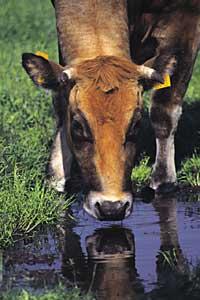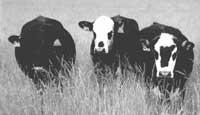Viruses, unhappy jumps
2003/12/01 Arrese, Elixabete | Basaras, Miren - Mikrobiologiako Irakasle Titularra Iturria: Elhuyar aldizkaria

Today, measles and flu are not deadly diseases, but it has not always been so. Elgorria, for example, killed the inhabitants of Tierra del Fuego when the European missionaries arrived. However, the missionaries themselves easily overcome illness. Even when Hernán Cortés burst into Mexico, soldiers incubating navarrería or baztanga contaminated most Aztecs. For the Aztecs smallpox was a new disease, so a third of the population died.
This continues to happen. Missionaries, guerrillas and search engines of gold or wood to the Amazon pollute the natives with flu or tuberculosis. The flu itself caused millions of deaths. In the 20th century. There were three main pandemics that affected several continents: 1918, 1957 and 1968. But despite the epidemic, they were not completely new viruses: they were new strains of previous viruses. Viruses reproduce, mutate and constantly evolve within our cells. And suffering genetic changes makes them unpublished for the system of internal defense of the human being.
However, there is a more dangerous process: the virus that infects a certain animal species manages to infect another. Then he becomes a totally unknown and dangerous enemy. It is believed to have occurred with AIDS, flu or new Asian pneumonia. And in the future there will be more virus jumps between species.
Jumps between species
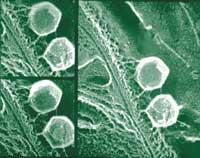
The truth is that the passage or jump of viruses from one hostel to another is normal; it has always been. Old viruses such as chickenpox, measles, or smallpox may have jumped humans from other species. But, although it was so, many years ago they have polluted man for thousands of years.
In the case of influenza, as it is a more recent disease, it is quite clear that it jumped humans for the first time since pigs about five centuries ago. The first epidemic took place in 1562 and probably in Asia. If that leap between species had been unique in history, there would not be as many people dead due to the flu epidemic, because humans would already be resistant, as in the case of measles. But the flu virus has jumped many times, and as different strains have increasingly appeared, our immune system has not been able to combat them. There have also been more viruses known as the human immunodeficiency virus (HIV) and the current Asian pneumonia virus or abnormal pneumonia (SARS).
In fact, while the virus reproduces, its genetic information is recombined and genes are crossed. The conclusion is simple: many times the virus itself is transformed, mutated. These mutations are precisely those that attribute the ability to infect another animal species.
But these jumps between species do not occur in one way. To investigate the leaps of the influenza virus, for example, aquatic birds, chickens, pigs and humans have been studied and it has been observed that in each animal species the virus changed differently.

The flu virus has 8 genes. Two of them are the so-called RP and NA genes, and the proteins they encode have a very important function: they allow cell adhesion and virus penetration. These proteins are exposed in the virus, so they are detected by the human immune system. In this case, antibodies block and inactivate the virus and prevent infection. But the RP and NA genes are constantly mutating and these mutations can cause new epidemics in the hotel animal.
In addition, a mixture or recombination occurs between different strains of viruses, resulting in different variants of RP and NA. In this recombination the two genes are interchangeable and are much more violent than the changes produced by simple mutations. This can cause viruses capable of infecting other animal species. This type of phenomenon has occurred throughout history and has been one of the causes of epidemics or pandemics of diseases of recent decades.
In fact, waterbirds are the natural reservoir of the influenza virus, for which, although the virus is not harmful, they can carry the virus. In fact, in waterbirds have been found all the variants of RP and NA currently known, 15 and 9, respectively, but many have also been found in pigs. Thus, it is believed that the virus has passed from waterbirds to pigs and pigs to humans. Although it has ever happened, it is difficult for the avian influenza virus to contaminate the man directly. The virus of pigs can more easily infect humans, with the virus of birds that have previously jumped pigs or with some virus that has contaminated humans, which has made a new leap to pigs and has returned to humans.

In the case of human immunodeficiency virus, several hypotheses have been raised about its origin. The last hypothesis published indicates that in a monkey two different viruses were mixed that infect two species of primates, hence HIV. He ate the flesh of the man-contaminated monkey and thus internalized the new virus. Being inside the man, the virus suffered mutations that would allow him to infect the man and was transmitted from one man to another. This new virus could easily cause outbreaks.
Have the jumps increased?
According to experts, Asian pneumonia that has become popular in recent months has killed about 1,000 people and contaminated nearly 8,500. The appearance of the first cases in southern China is not rare. In fact, most new strains of influenza viruses have also emerged in this territory. And, in short, both viruses are transmitted similarly by the airways. According to the virologists, the pandemic that in 1918 called the Spanish flu also emerged in China. It is not surprising that human beings, birds, pigs and other species are concentrated in this territory, which often have a high population density and a lack of hygiene. The jump from a virus to the human being in this type of sites facilitates its transmission from one person to another.
According to experts, every year 4 or 5 new viruses appear that infect man, but fortunately not all are harmful. In recent years new viruses, human immunodeficiency virus, hepatitis C, E and G have appeared, some herpesvirus, new inflammatory viruses that cause serious lung diseases, causes of hemorrhagic fever in South America... And at the same time, the appearance of previously known viruses, such as dengue fever, Lassa fever or Ebola, have reappeared. In poor countries there are serious economic difficulties in implementing disease control mechanisms, and in many other cases customs or religion itself put them in place.
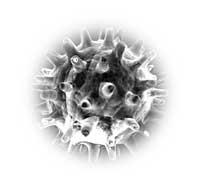
There are special laboratories worldwide to follow the status of viruses. They are called ‘vigilant laboratories’, which allow us to know when and where new strains of viruses occur. According to a report published by the World Health Organization, in recent months new viruses have appeared in addition to Asian pneumonia: In Brazil yellow fever has appeared and has left more than twenty dead; in Congo there has been an Ebola epidemic that has left more than one hundred dead; and in February and April the flu virus has jumped twice from chickens to humans.
According to experts, the emergence of new epidemics may be due to the fact that man has contacted new animals. Ecological changes have also occurred. They highlight the deforestation of the rainforest and climate change. In forest deforestation, for example, ticks carrying jungle viruses can come into contact with humans and become pollutants. Climate change has also led to the arrival of species in new territories, and the change of ecological niche has facilitated new leaps between species. It can therefore be said that the concern is real and permanent.
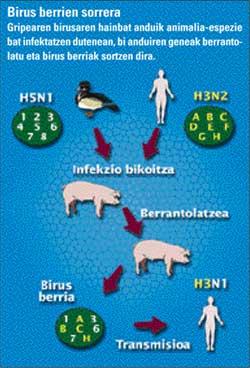
The growth of viruses in laboratories is difficult. But Severe Acute Respiratory Syndrome (SARS) was quickly identified on 16 April.
It has been carried out thanks to the collaboration of Hamairu laboratory, which in addition to identifying the virus, has completed its entire genomic sequence. This has facilitated the development of new diagnostic techniques, and currently several laboratories are working on the development of effective tests for a rapid diagnosis of the disease.

It seems that no new cases of severe acute pneumonia have been detected in humans since July. Several possible cases have appeared in the past, but it has not been confirmed that abnormal pneumonia viruses have actually occurred. The World Health Organization says the epidemic is over and the first important steps have been taken to develop the vaccine. But nearly 1,000 people have already died worldwide, most in China.
In short, the plague of Asian pneumonia has taught us many things. On the one hand, the appearance of an infectious disease in a given country threatens the rest of the world; infectious diseases do not respect international borders and jump from one person to another and reach any country. On the other hand, outbreaks of infectious diseases highlight the fragility of public health infrastructure.
The latest scientific data have also generated fear: the SARS virus also infects cats and ferrets in the house, so the list of animals that harbor this promiscuous virus is getting longer. Many of these animals live very close to humans and during this winter they have declared that there is a risk that the virus will jump back to humans.
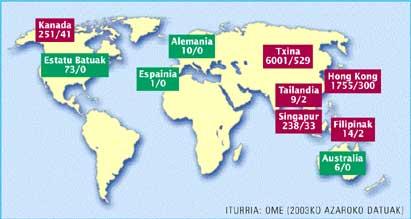

Gai honi buruzko eduki gehiago
Elhuyarrek garatutako teknologia




